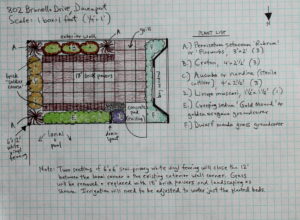HOAs and the $500 Mailbox Case
July 25th, 2017
If you live in a community with a homeowners association (HOA), maybe you don’t mind a committee of others deciding what you can and can’t plant.
But sometimes, these rules get a little persnickety… like the case of the Maryland couple who spent $33,000 in legal fees on an HOA mailbox dispute.
Dubbed the “$500 mailbox case,” this one ended in January with a court win by the couple.
According to the Washington Post, Keith and Yvonne Strong tried to replace the mailbox in front of their golf community in the D.C. suburbs in 2009.
They bought and installed a $35 wooden one that was similar to the one they already had. Two months after it was up, the Strongs got a notice from the Pleasant Prospect HOA that the box didn’t conform. If they didn’t replace it with the prescribed model, they’d face fines of $100 a month.
It turns out the HOA had voted to require $500 metal mailboxes, monogrammed with the letter “W” (for the Woodmore community) and mounted on a decorative post.
The HOA’s lawyer said the decision was made because wooden mailboxes were rotting and the specific new ones would “maintain uniform and harmonious standards in the community,” according to the Post.
The Strongs thought that was going too far. So they appealed and fought a battle for more than seven years, ultimately winning a three-day Prince George’s County trial in which the judge ruled the HOA had overstepped its authority.
The Strongs spent $33,000 to keep their $35 mailbox. Keith Strong told the Post it was worth it and that “it wasn’t just about the mailbox. The issue really here is property rights. If they were granted this power, where does this stop?”
I’ve wondered that, too, after a variety of HOA issues I’ve encountered in my travels helping people with garden designs.
My first encounter was about 20 years ago when a Lower Paxton Twp. couple hired me to do scale drawings of their entire front and back yards. They told me a neighborhood association had to approve all plantings in advance and the plan had to be submitted on paper.
I remember the husband telling me the one thing he really wanted was an oak tree out front because that was his father’s favorite tree. He had the space to do it, and so I put one on the plan.
But the board rejected the oak because it wanted a “uniform and harmonious” plan of flowering pears every 30 feet through the development. Instead of a native, wildlife-friendly, sentimental choice, the homeowner was forced to go with an invasive, weak-wooded non-native variety – including some that were planted right next to utility boxes because that’s where the 30-foot interval fell.
Another time, a client who was an avid Pittsburgh Steelers fan told me she painted her front door Steelers gold, only to be told she had to change it because that wasn’t an HOA-approved door color.
And another garden-loving client once lamented while I was helping her pick plants that she wished she could put in a compost pile.
I asked her why she didn’t get one, and she said the HOA rules didn’t allow compost bins. The reason she got was that they attract rodents – as if mice suddenly materialize out of the air when a compost bin shows up. From what I’ve seen, rodents are around whether there’s a compost bin or not.
So rather than recycle yard waste to create the best soil amendment available, that homeowner pays like the rest of her neighbors to send leaves and prunings off to the landfill.
I’d never dealt with an HOA first-hand until last fall when I was helping my daughter do some landscape improvements to a villa she had bought near Orlando, Fla.
I thought it would be nice to fully enclose a semi-enclosed 8-by-12-foot courtyard with a panel wall and turn the lawn into border gardens with a paver patio in the middle.
The HOA rules said I had to submit drawings, along with a copy of the plot plan, pictures of the area, pictures of the proposed wall, and a detailed description of the work.
It took me several hours to complete the packet and application, which weeks later got rejected by the HOA’s Architectural Review Board.
They said they also needed a written report from the HOA landscape company on changes to the irrigation (it amounted to a simple, 2-minute redirecting of four heads, which the irrigation guy had told me face-to-face) and a written statement from the county on what (if any) permits would be needed.
I’m no Keith Strong, so rather than waste more time, I gave up, skipped the wall and pavers, and submitted a new application with just the plants.
That passed muster – even without a written report from the garden center where I planned to buy the plants.
It would’ve been a nice little courtyard – and one I could’ve done in less than a day with no paperwork in my own non-HOA yard.
A new 2017 Houzz Landscape Trends Study of 1,000 homeowners who completed landscape projects in the last year found that 28 percent of those projects were subject to HOA or neighborhood association rules.
Apparently, there are a lot of HOAs out there. And apparently, a lot of people prefer uniformity and “harmoniousness” to diversity and design sense.
That puzzles me. For a country that seems to be so freedom-driven, so focused on individual rights, and so adamant against any authority telling them what they can and can’t do – especially on their own property – this one doesn’t compute.









